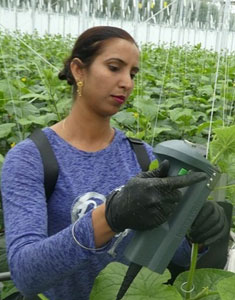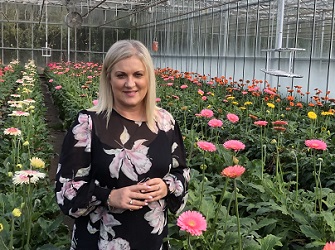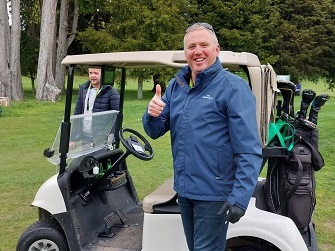Sign up here to subscribe to the Grower2grower Ezine. Every two weeks you will receive new articles, specific to the protected cropping industry, informing you of industry news and events straight to your inbox.
‘Eliminating screen opening for dehumidification leads to a complete rethink of a site’s energy need’
For many years, the Neurath power plant was the second-largest lignite-fired power plant in Europe in terms of gross electrical output. When the two power plant units F and G were commissioned in the fall of 2011, the Neurath growers in the shadow of units A to E were already a few months into the tomato harvest in their new, 11-hectare greenhouse.
The fact that lignite-fired power generation provides enough heat to get crops like tomatoes and cucumbers safely through the winter and summer is proven not only by the clouds visible from far above the cooling towers, but also by the 2015 expansion of the Neurath greenhouse area to its current 16 hectares.
A look at the opencast mining sites shows that the future heat supply will not fail because a lack of coal. According to Carsten Knodt, the decisive factor will rather be a mixture of the energy crisis and energy transition, CO2 emissions and coal phase-out, which is not easy to resolve.

Don’t get carried away
Knodt, one of the four founders of the large-scale project in Neurath, is not worried by this, however. Nor does he engage in speculation about what might one day be, preferring instead to concentrate on the things that he himself has in hand.
As a full-blooded grower with chlorophyll in his veins, this naturally means producing and selling vegetables that are as perfect as possible. The result is one of the most modern greenhouses in Europe, close to the major conurbations of North Rhine-Westphalia.
The biggest change since the site was first stocked in 2011 has been the gradual switch to year-round cultivation, which has taken place over the past few years. “Even if you think you actually already know everything about tomatoes, the switch is a bit like starting a whole new crop,” Knodt recalls.
Double-layer canopy system
Along with new lights, a blackout screen has also made its way into the production facilities. The choice was Svensson’s OBSCURA 9950 FR W. Together with the LUXOUS 1147 FR, which had already moved in earlier, the two shades ensure maximum energy-saving potential, especially since the 2022 installation of Svensson’s ClimaFlow system. Based on the VentilationJet System®, it allows the company to push the limits of what is currently technically possible.
Their early experience was compelling. The ClimaFlow System broke new ground in cultivation technology. According to Knodt, how far they push the system depends somewhat on the individual grower on-site. He says they would never have retrofitted the Vitarom-owned site with ClimaFlow without the savings they’ve seen.
ClimaFlow convinces
In addition to the obvious advantage of a more even and reliable climate, the fans provide increased air exchange. Knodt says the resulting significant increase in screening hours has led to substantial energy savings, especially in the low twenties temperature range.
Eliminating screen opening for dehumidification leads to a complete rethink of a site’s energy needs, he says.
A significantly lower peak heating load can then be assumed for the heating design. This in turn has an impact on the boiler dimensions, the distribution between full-load and partial-load operating times, the maintenance intensity and, last but not least, on the contractual arrangements with the energy supplier.

Not just financial advantages
Depending on the personal willingness to take risks, savings of between 10 and 20 percent are possible during operation, and the same applies to the initial heating installation, estimates Knodt.
But did bringing Svensson in really help?
Knodt’s initial response is more gut feeling than bottom line. In principle, he trusts family-owned companies. One-night stands are more a matter of short-term profits, he says.
That said, he also firmly believes that the quality of Svensson products is simply better than that of its competitors. How much better the Svensson products actually are, however, is difficult to quantify. Even the comparative tests from the laboratory don’t necessarily help much.
“On the one hand, there is what you measure,” he says, “on the other hand is what the plant makes of it.” Neurath has a host of different varieties of tomatoes and cucumbers and planting dates vary widely.
Nevertheless, “you have the feeling, for example, that the beneficial insects suddenly feel more at home, and that the plants are better protected,” he says.
Source:
For more information go to: www.ludvigsvensson.com
CLASSIFIED
Photo
Gallery
Subscribe to our E-Zine
More
From This Category
More daylight in the greenhouse for higher production

Minipack Quickshrink Ltd.

John van Santen joins the management of Metazet

Metazet Completes Greenhouse Installation in 2 Days for New R&D Greenhouse

Bale Breaker, Just Press Play
























































